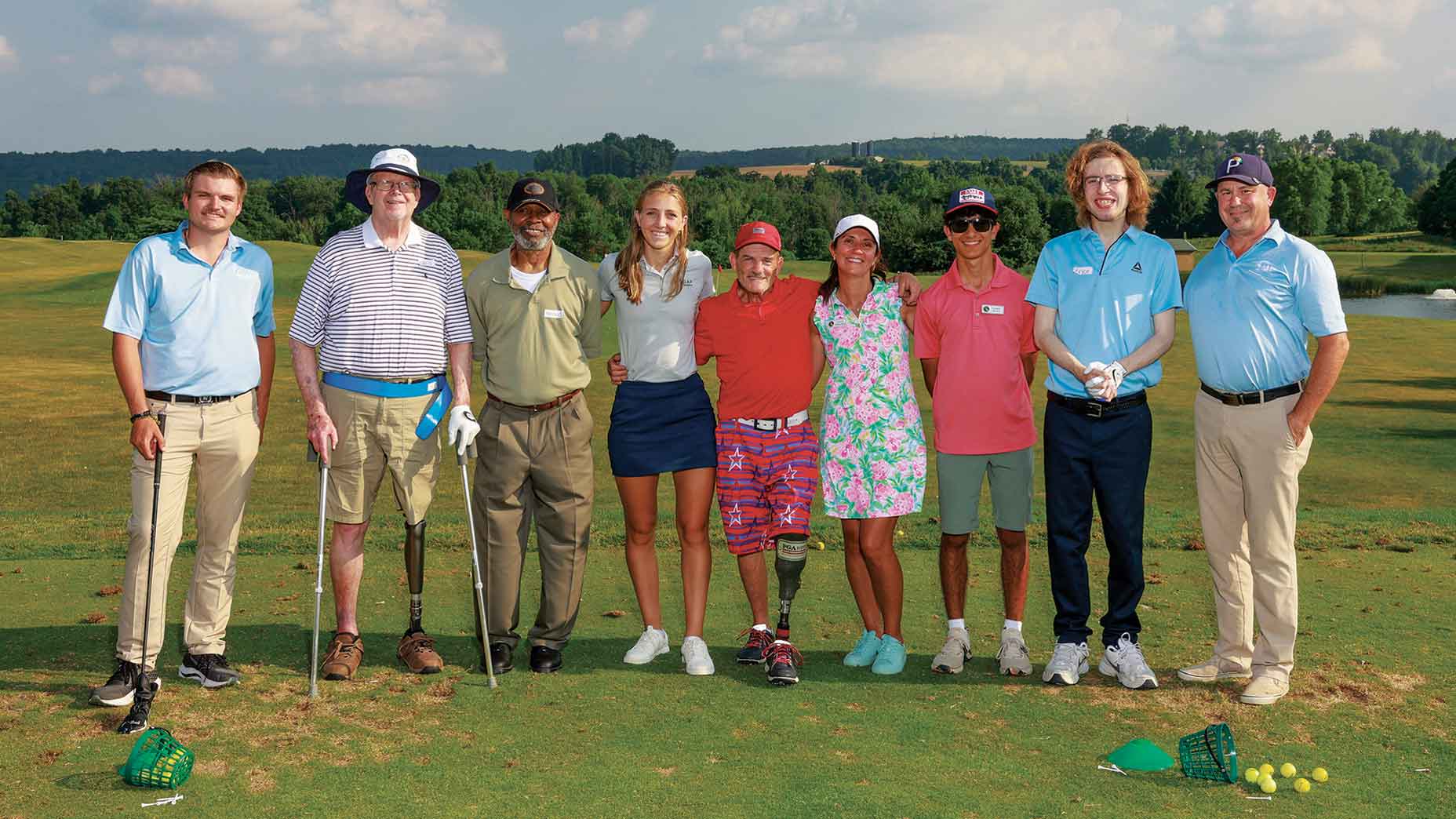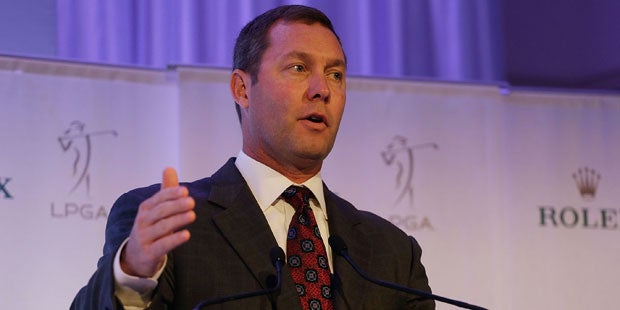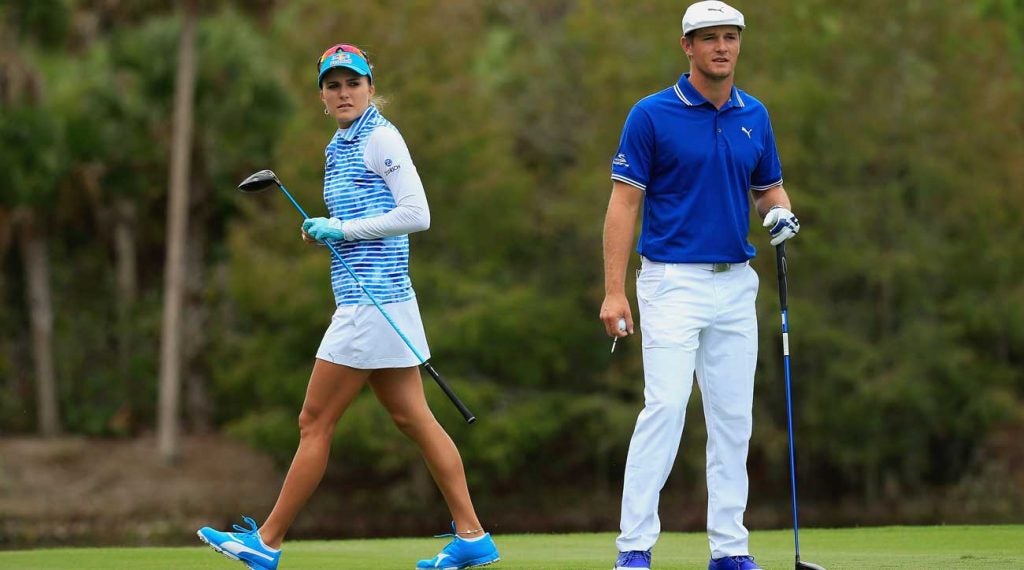 Why adaptive golfers have more competitive opportunities than ever
Why adaptive golfers have more competitive opportunities than ever
How to elevate the LPGA: 9 ways the women’s tour could get more of the attention it deserves

The LPGA has come a long way in the last 10 years. As recently as 2009, the tour was bleeding sponsors, with some players concerned that the association, founded in 1950, might not survive.
“I went to bed crying some nights, thinking, ‘What’s going to happen to our tour?’” recalls Nancy Lopez, who won 48 LPGA events in her World Golf Hall of Fame career.
Lopez was in her early 50s then but for younger players such as Angela Stanford, who joined the tour in 2001, much more was at stake. Stanford was attending a players’ meeting when, informed about the schedule for 2010 — only 25 official events would be staged, nine fewer than in 2008 — she realized she might have to find another way to make a living.
“Everybody was kind of in shock,” Stanford says now, “like, ‘Is this really happening?’ How did we get here?’”
Enter Mike Whan. Since replacing Carolyn Bivens as LPGA commissioner in January 2010, Whan has added events, grown purses and helped the LPGA become a global enterprise with tournaments in 12 countries.
Yet, for all its growth — 32 events and more than $70 million in prize money in 2019 — women’s professional golf still largely keeps a low profile, at least in the United States, where the LPGA was founded and is still based. Household names remain scarce.
“Michelle [Wie] and Annika [Sorenstam], if you ask non-golfers, those are the two names you’re going to get,” says Stacy Lewis, the former No. 1-ranked player in the world. Not ideal, given Sorenstam retired in 2008 and the injury-prone Wie, for all her star power, made just five starts in 2019 and hasn’t won in 20 months.
Asked if the goal should be for more LPGA watercooler-talk on Monday mornings, Lewis agreed without hesitation.
“We just don’t have that,” she says.
If you are a golf fan, the LPGA’s marketing conundrum isn’t breaking news. Still the tour, and those who care about its future, must find ways to draw more eyeballs. To better assess the LPGA in 2019, and the outlook ahead, GOLF.com spoke to active and former players, Commissioner Whan and members of the broadcast and print media. Informed by those conversations, here are 9 ways the LPGA could grow its audience.

1. MORE NETWORK EXPOSURE
The LPGA appears on the networks (ABC, NBC, CBS, FOX) just five weekends a year. The other 435 hours of LPGA coverage airs on the Golf Channel, which isn’t an optimal scenario for exposing new viewers to the tour and its uber-talented players.
“On Golf Channel, I get an audience of people that have already bought the Golf Channel,” Whan says. “They have made golf part of their cable package and part of their life, but I don’t really get a chance to show off my brand to the casual fan that may not see us day in and day out and now know what the LPGA is today.”
Those five weekends of network coverage, Whan adds, are “still a long way from my vision of at least half of our events having some sort of network exposure. Because then we would introduce our sport to this larger audience on a pretty regular basis.”
Give the commissioner credit for setting a high bar. Whether he achieves it is another matter. Television is like any other industry. It’s all about the bottom line, and the bottom line to would-be network partners and their sponsors has been that the LPGA isn’t worth significant investment. That attitude needs to change, and that’s where the PGA Tour comes in.
2. MORE SUPPORT FROM THE PGA TOUR
The PGA Tour is the lead negotiator for the LPGA’s next TV contract, which will take effect in January 2022. The folks in Ponte Vedra should use that opportunity to become a fierce advocate for women’s golf, urging network execs to expand their coverage of the LPGA. More eyeballs on the LPGA would help grow the game at large, which would also benefit not only the PGA Tour but also the networks.
The Tour — and this is a positive sign — appears willing to play that role. As Rick Anderson, the tour’s chief media officer, says of the current negotiations, “We’re going in saying, ‘How many [LPGA tournaments on the networks] could we get?’… Mike Whan told me, from our first discussions, having network windows was very important to him and I certainly understand why he believes that.”
More viewers would mean a lot to the players, too.
“If fans give the girls out here a chance,” said Kristy McPherson, who joined the tour in 2007, “they’ll fall in love with them. There are so many great personalities and such young talent.”
Corporate America also needs to step up and join the ranks of LPGA sponsors that already includes such A-list companies as Rolex, All Nippon Airways and National Car Rental. Give credit to Dow, the sustainable materials company, which announced this week that it is raising the purse for its team event in Michigan to $2.3 million, the highest payout for any tournament outside of the majors and Tour Championship. It’s time for other businesses to make a strong commitment to the women’s game.
3. ORGANIZE A FEDERATION
For years, one of the biggest challenges facing the LPGA has been the dearth of American stars. That’s why many were thrilled when Michelle Wie won the 2014 U.S. Open in Pinehurst. Perhaps Wie, born in Hawaii, would fulfill her potential, at last, and became one of the top players in the game. It hasn’t happened.
To be fair, though, it’s not so much that American players have become mediocre. It’s that the rest of the world, especially Asia, has vastly improved.
How can the United States close the gap?
“All these countries have golf federations that mentor and give their juniors an opportunity to travel around the world to play golf, and to hone their skills,” says seven-time major winner Juli Inkster. “The United States doesn’t have anything like that, so we’re really behind the eight-ball when it comes to developing junior golfers.”
Judy Rankin, a former player turned television analyst, agrees the idea is worth exploring, noting, “We count on our college systems to be our farm teams. But what’s happening, and it’s not bad, is that at least half of the people in those programs are coming from other parts of the world.”
ADVERTISEMENT

4. HAVE WOMEN AND MEN COMPETE TOGETHER
Much of the success of women’s tennis is tied to the fact that men and women concurrently play the major tournaments at the same venue.
Why can’t golf do something similar?
We’re not talking about holding the U.S. Open and U.S. Women’s Open at the same course in back-to-back weeks, a la Pinehurst in 2014. We’re talking about men and women playing the same course in the same week at the same time. The field could include 78 women and 78 men and alternate the groups by gender. Rory, Phil and D.J, for example, could be followed by Lexi, Morgan and Paula.
Henrik Stenson and Annika Sorenstam are backing a tournament in Sweden in 2020 that will follow this format — both genders on the same course for one trophy and purse. There’s no reason the LPGA and PGA tours can’t follow suit.
“It could only enhance the sport itself,” said longtime agent Jay Burton, whose clients include Lydia Ko, Brooke Henderson, Danielle Kang and Paula Creamer. “It would be wonderful for people’s outlook on women’s golf if they could watch it. And the way to watch it is to give them a reason to, and if it means you’re going to be watching the men and the women, so be it.”
5. FIX THE SCHEDULE
This year, two major championships — the ANA Inspiration and U.S. Women’s Open — took place on the same week as other marquee events in golf. That can’t happen. The ANA went up against the inaugural Augusta National Women’s Amateur; the Open against the Memorial, Jack Nicklaus’ tournament at Muirfield Village.
In the case of the ANA, the LPGA must make the move. Augusta National won’t switch dates, given the tournament is held at an ideal time, a week before the Masters. This isn’t a new conflict, either. The ANA, known for years as the Dinah Shore, has long struggled with its proximity to the Masters, with some members of the media skipping the event to arrive early in Augusta.
The ANA, played on the same course — Mission Hills Country Club in Palm Springs — every spring has a fabulous tradition of its own and deserves a week where it is guaranteed to be the story in golf, not to be overshadowed by Masters hype. Moving the ANA to earlier in March (not opposite the Players!) would make a lot of sense.
As for the U.S. Open, it not only had to compete with Jack this year, as it did in 2018, but it also had to compete with Tiger, who was making only his second start since his Masters win. No wonder The New York Times sent its lead golf writer to Muirfield Village and not the Country Club of Charleston.
“I’m on the Memorial board,” Rankin says, “and I’ve been so upset about that ever since it happened two years ago. It doesn’t hurt Memorial. But it does hurt the U.S. Open.”
6. LESS IS MORE
There should be four majors, not five. The PGA Tour has four, and it seems to work just fine, allowing more time for anticipation to build between majors. Each one feels like a big deal.
Having five instead of four “diminishes the importance of a major,” says Hall of Famer Jan Stephenson. Adds Inkster, “I still think four majors is tradition.”
So which major should the tour demote?
Last in, first out. The Evian Championship in France, which has been a major since only 2013, is the obvious choice, mostly because of how it’s crammed into the schedule. In 2019, the Evian was played the week before the AIG Women’s British Open. Any afterglow it might have enjoyed was quickly absorbed by the grandeur of The Open.
7. MORE IS ALSO MORE
If removing a major from the calendar is a non-starter, here’s a contradictory alternative: add another major, at Augusta National. This idea isn’t a new one, but it gained traction last spring when the Augusta National Women’s Amateur was a huge success.
Credit Augusta for welcoming in a women’s event, but it would be an even more poignant statement to conduct a tournament for the best women golfers in the world, period. It could hold the event in October, soon after the course opens for play. It would be more compelling than the low-wattage fall tournaments on the PGA Tour’s wraparound schedule.
“That would be an amazing thing,” Inkster says. “The Masters could have grown the women’s game 20 years ago by doing something like that.”

8. BRIDGE THE LANGUAGE DIVIDE
Many of the dominant players from Asia — more than half (30) of the top 50 in the world rankings hail from Korea, Japan, Thailand and China — strive to learn English. But there are still occasions when the language barrier keeps players’ stories from being relayed with the depth and detail that they deserve. That can hinder players’ marketability (and the tour’s).
Exhibit A: The 2019 U.S. Women’s Open, won by Jeongeun Lee6, a 23-year-old rookie from Korea. Quite a feat. But when you consider all that Lee6 has had to overcome — her father was paralyzed in an accident when Jeongeun was only four — her story becomes even more unlikely.
Lee6 gave her post-tournament press conference in Korean, with an interpreter providing a translation. When a writer asked how she had dealt with the adversities in her upbringing, she didn’t offer much color. “By looking at my family situation back then,” she said. “I thought about wanting to play golf because I wanted to support my family no matter what.”
Would her response have been more revealing if Lee6 was speaking in her native tongue to Korean reporters? Or if she was bilingual and delivered her answer in English? We’ll never know. But it’s undeniable that working through an interpreter makes it more difficult for reporters to follow up, to develop a rhythm. (Also, the interpreter was Lee6’s manager. Whenever that situation arises, it opens the door to an image-conscious manager editing a player’s response on the fly.)
Unfortunately, it does not appear likely the tour will bring on interpreters any time soon.
“There are going to be examples,” Whan says, “when we’re still kind of landlocked from a translation perspective, but it’s pretty far and few between today, certainly relative to where we were. You’d be hard-pressed to find a player that’s been out here for four years that can’t have the conversation you and I are having right now.”
Still, precisely because of such examples, the LPGA should have interpreters at every event, ones unaffiliated with the players.
9. BRING THE PLAYERS’ STORIES TO LIFE
Golf tours are like TV series, with a cast of characters taking us on a journey, from one episode (or tournament) to the next. Roone Arledge, the legendary ABC Sports executive and producer, understood that. To heighten interest in the 1972 Summer Olympics in Munich, he launched “Up Close and Personal,” a series that profiled athletes from the U.S. and around the globe.
“I have often said that the Up Close and Personals ABC did when I was young made me know people like Franz Klammer,” Rankin says of the Austrian skier.
Golf Channel should adopt a similar approach.
The network interviews players on the range; produces 90-second segments such as “Caddie Knows Best,” in which players are asked to match answers supplied by their caddies; and has plenty of colorful features in its pre-game coverage and news shows.
That helps viewers to get to know the players, but it’s not enough. Fans need to see the players away from the course — and during the actual tournament coverage. Every player has overcome adversity, beat back doubts, battled demons. Inform the viewers how players arrived at this moment of triumph, and if they miss Inbee Park knocking it stiff at 15, they can catch it on delay.
“The theory is, if you don’t know the athlete, if we can’t help you get hooked on the athlete, you’re not going to want to watch the athlete,” said Pam Shriver, the former tennis great who is now works as a TV analyst. This model “has been an important part of sports ever since. You got to tell the story.”
***
Whatever happens over the next several years, the LPGA’s outlook in 2019 is far brighter than it was a decade ago. Stanford and her peers do not need to worry about looking for another job. “We saw one of the deepest valleys the tour will ever see,” she says. “We are worth the price of admission. That has to be true or this tour would have gone away.”
Still, to grow its fanbase in the United States, the LPGA — and its partners in the game — need to shake things up.
“I was just over in Korea,” Inkster says, “and it’s amazing how popular women’s golf is over there, more popular than men’s. We’ve got to find a way to get our popularity up.”
To receive GOLF’s all-new newsletters, subscribe for free here.
ADVERTISEMENT







